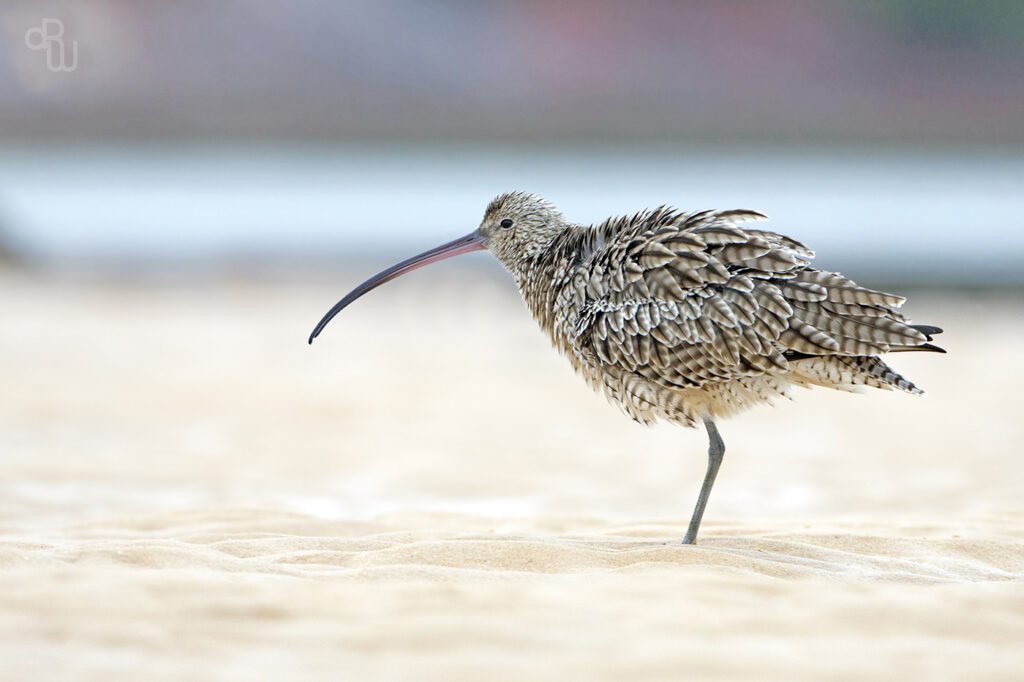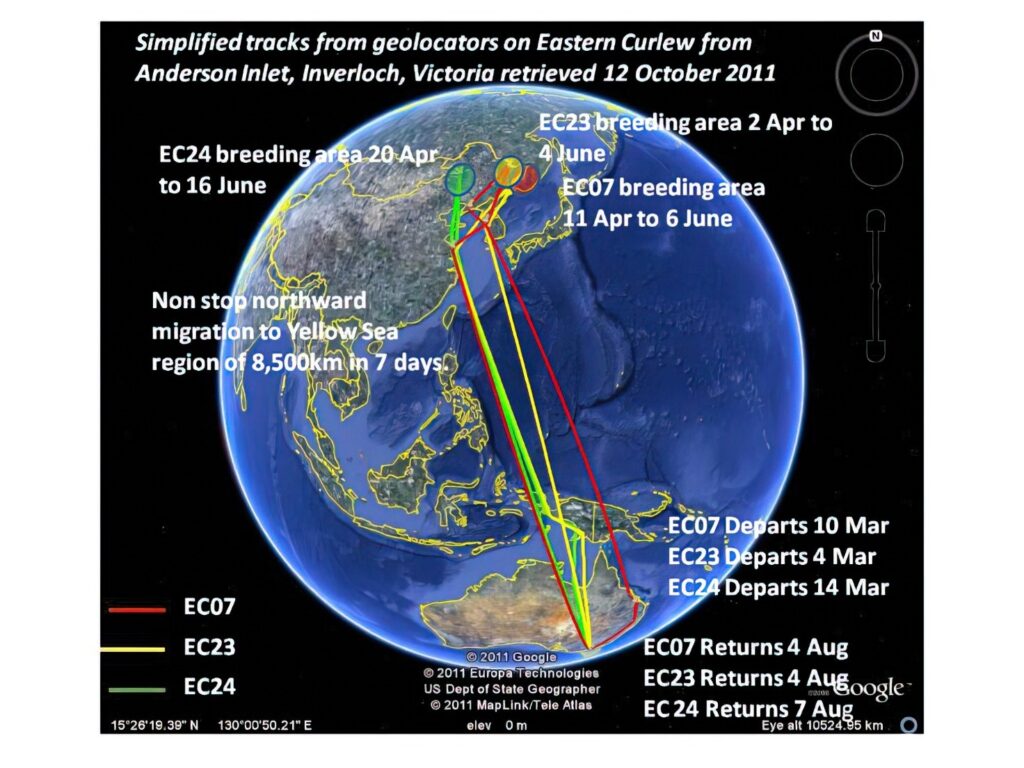Eastern Curlew
Eastern Curlew, also called Far-eastern Curlew, is one of the most endangered wader species in the East Asian-Australian Flyway and is experiencing dramatic and rapid declines. They are the largest wader, globally, weighing up to 1.2kg and with a long downcurved bill used to probe into mud for morsels. In order to mitigate species declines, the Curlew Project was launched.

In 2011, three geolocators (British Antarctic Survey (BAS) Mk10 units), were retrieved from Eastern Curlew at Inverloch, on the southern coast of Victoria . The three Eastern Curlews departed from their non-breeding area during 4–14 Mar and all flew 8,500 km nonstop to the western shores of the Yellow Sea taking 7–8 days. After a 3 week stopover in the Yellow Sea, each bird made a short movement (<1 day) to breeding grounds in the vicinity of the Amur River in NE China where they arrived between 2 and 20 April. All three bred or attempted to breed. They departed during 4–16 June and again stopped in the Yellow Sea. Returning to Australia, one bird (EC07) took three weeks, flying first 6,900 km to Queensland and then moving back to Inverloch in several short hops, arriving on 4 Aug. The other two, EC23 and EC24, arrived back at Inverloch on 4 and 7 Aug, but returned much more quickly in just five and seven days respectively, even though they both made a brief, 1–2 day stop en route in West New Guinea and the Gulf of Carpentaria (Queensland).
In addition to this geolocator program, a new national project – the Far Eastern Curlew Project has recently been launched. The FEC Project is funded by the National Environment Science Programme Threatened Species Hub and run out of the Darwin, Northern Territory node. This has entailed many Eastern Curlews being fitted with satellite transmitters, including 3 individuals from Victoria.

For more details about our work on Eastern Curlew, please check out the eastern curlew tracking page or refer to the following publications:
Minton, C., Gosbell, K., Johns, P., Christie, M., Klaassen, M., Hassell, C., Boyle, A., Jessop, R., Fox, J., 2013. New insights from geolocators deployed on waders in Australia. Wader Study Group Bulletin 120, 37-46.
Galtbalt, B., Lilleyman, A., Coleman, J.T., Cheng, C., Ma, Z., Rogers, D.I., Woodworth, B.K., Fuller, R.A., Garnett, S.T., Klaassen, M. 2021. Far eastern curlew and whimbrel prefer flying low-wind support and good visibility appear only secondary factors in determining migratory flight altitude. Movement ecology, 9(1), 1-12. https://movementecologyjournal.biomedcentral.com/articles/10.1186/s40462-021-00267-5